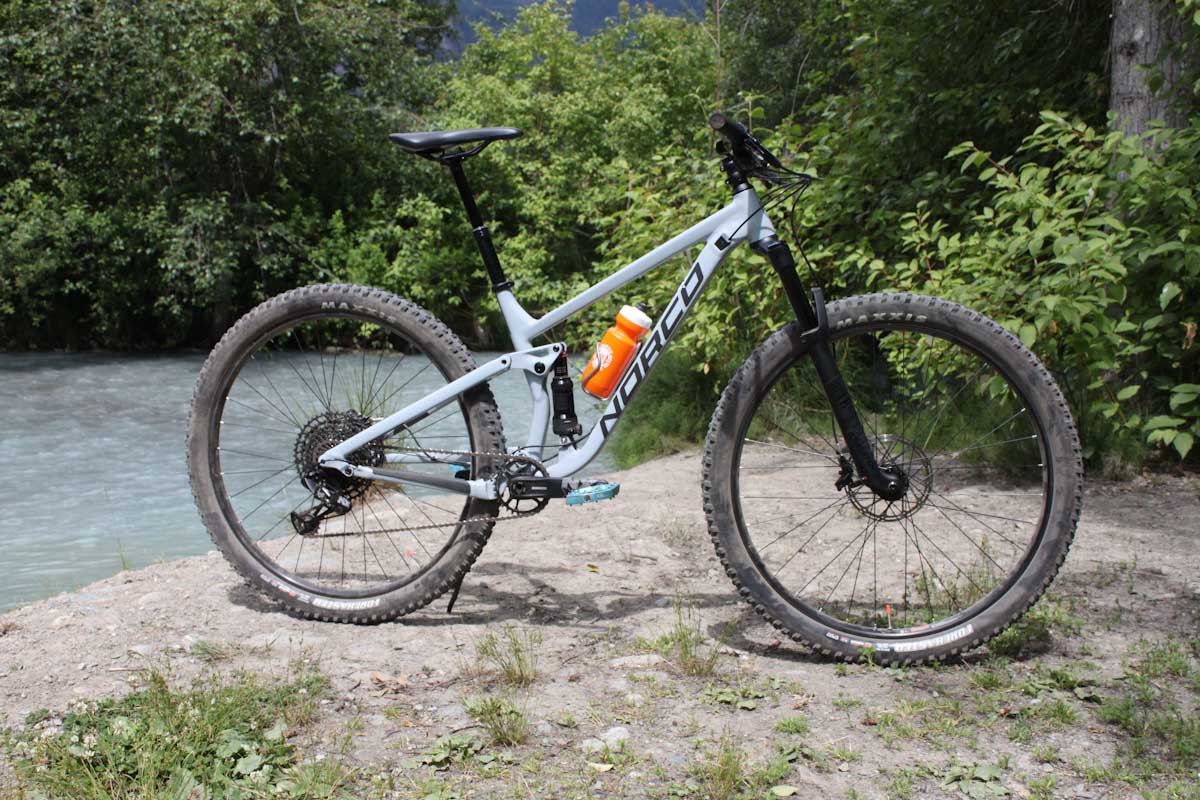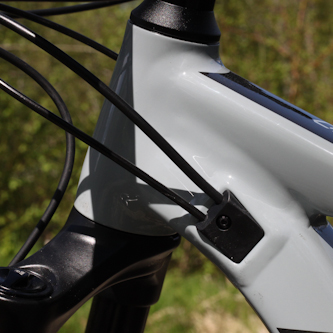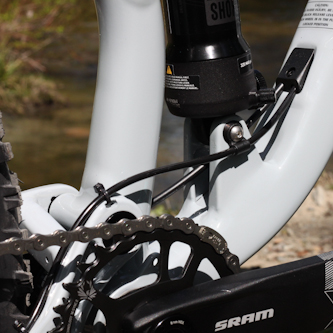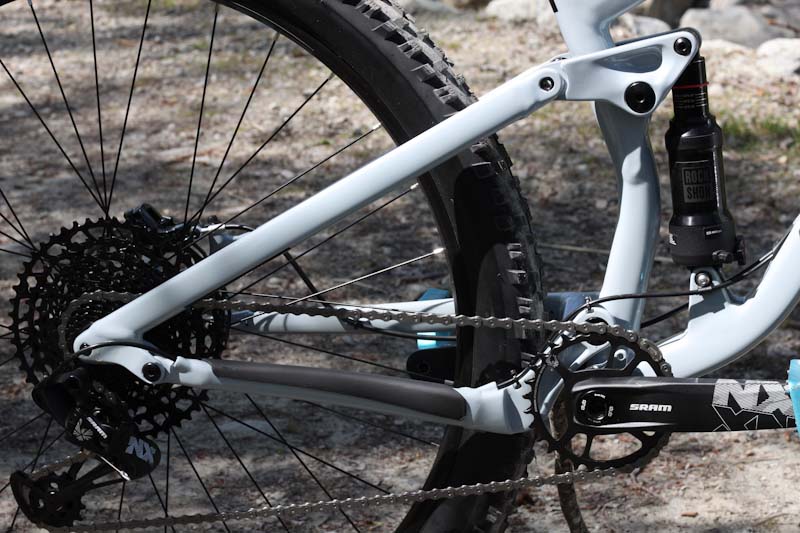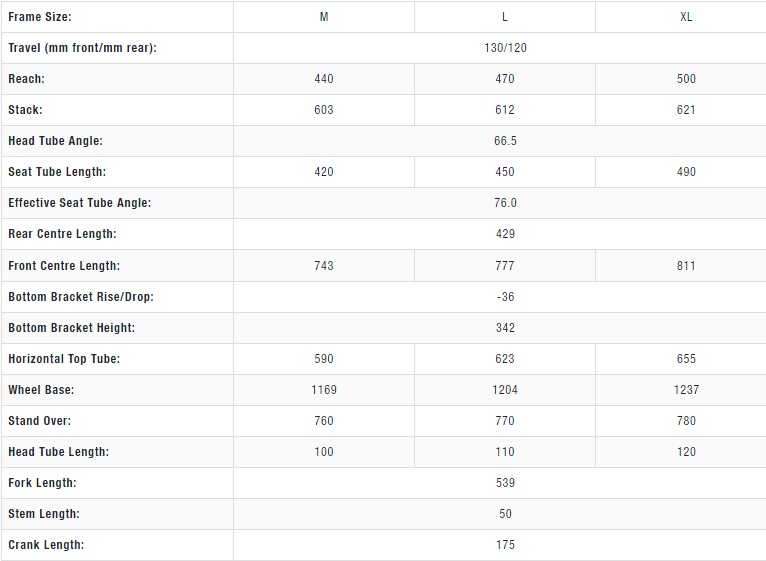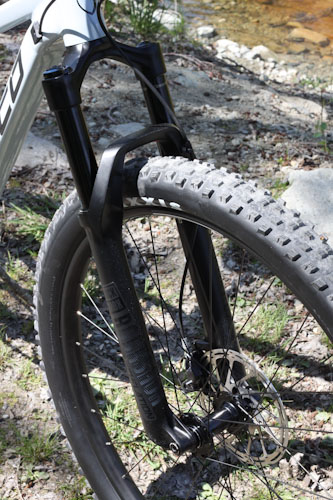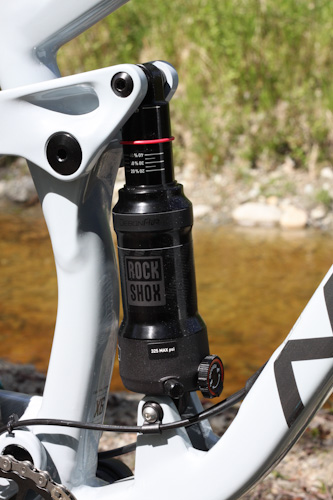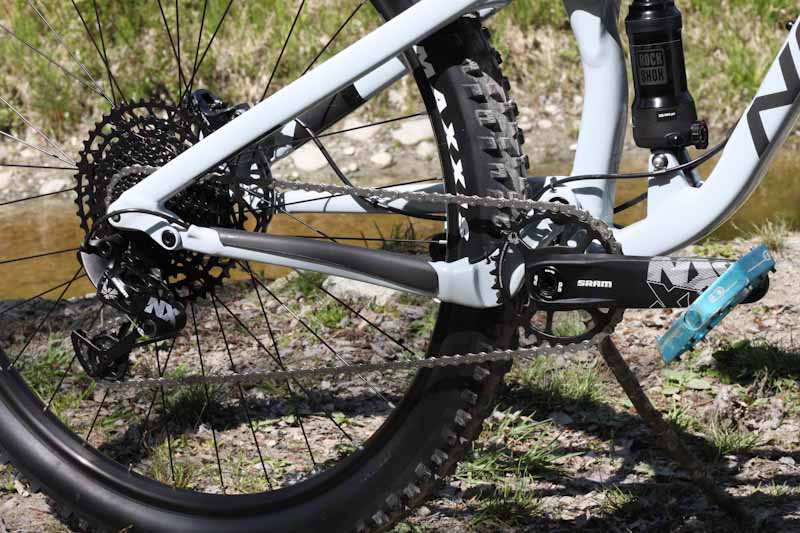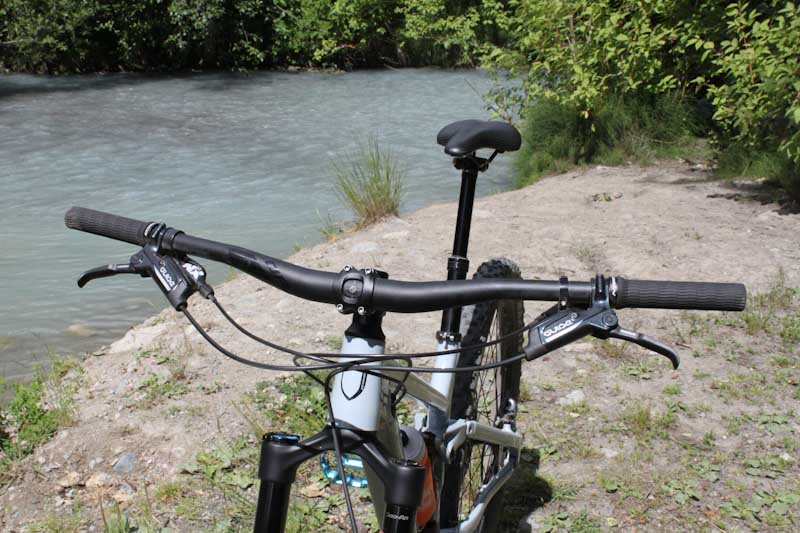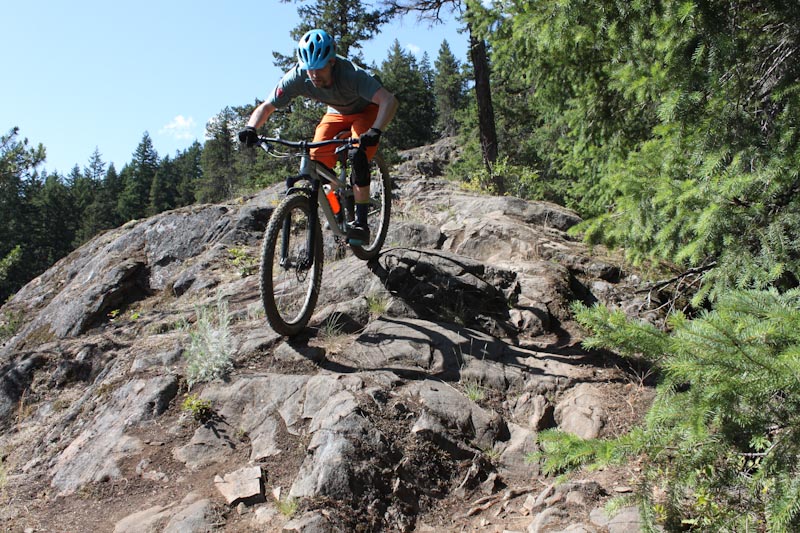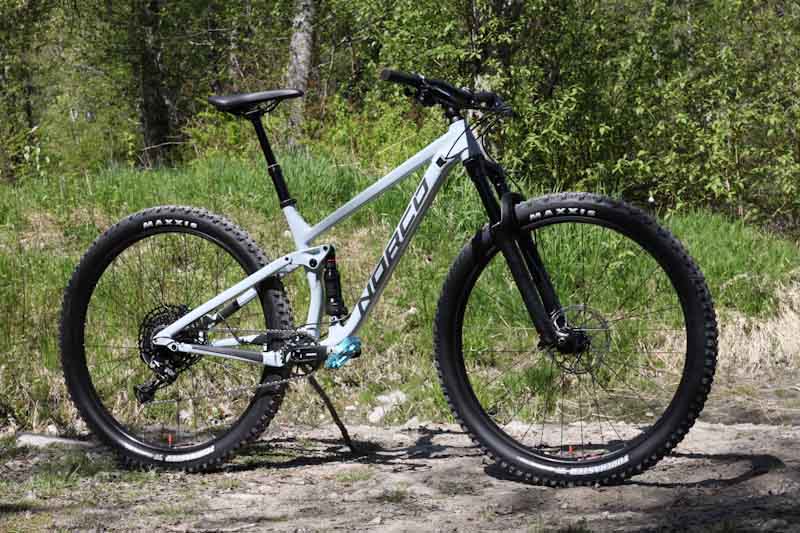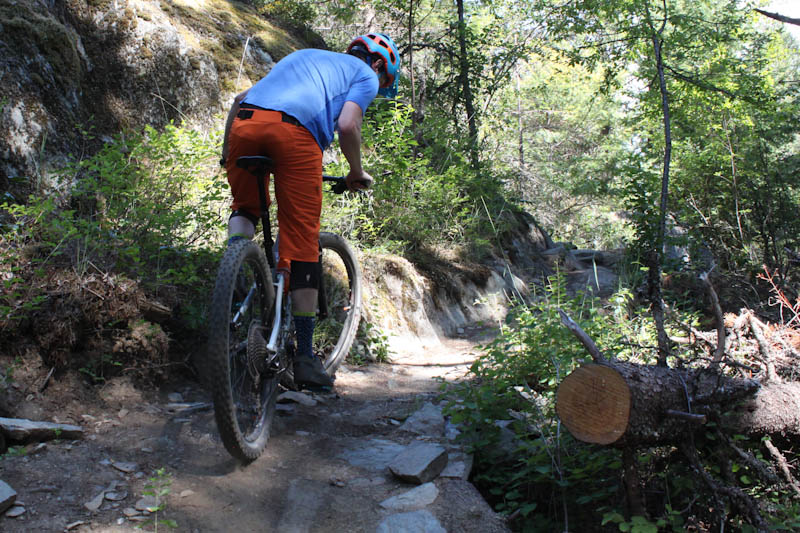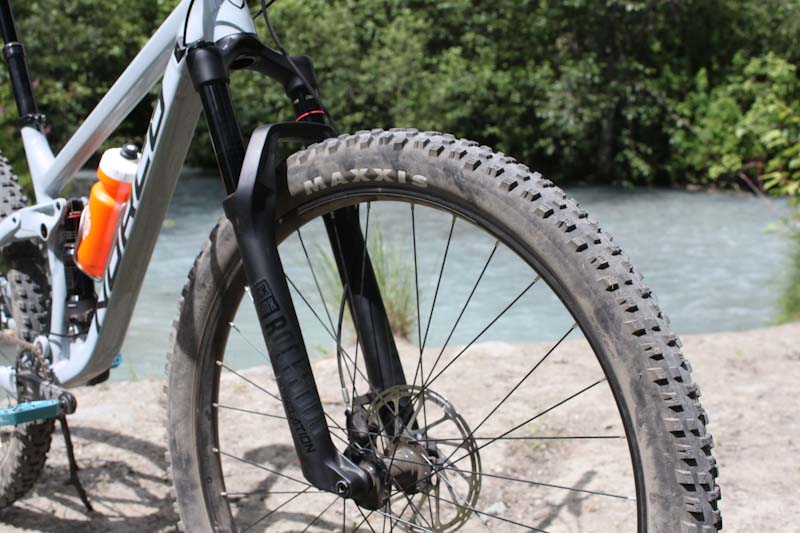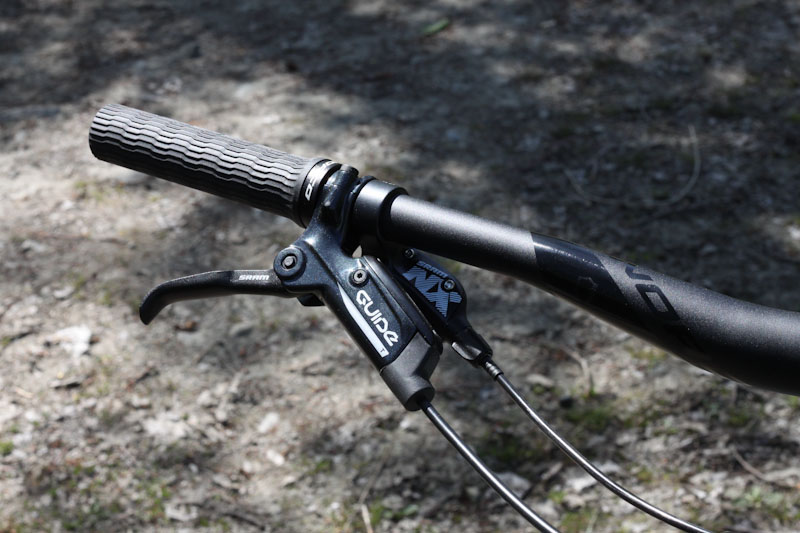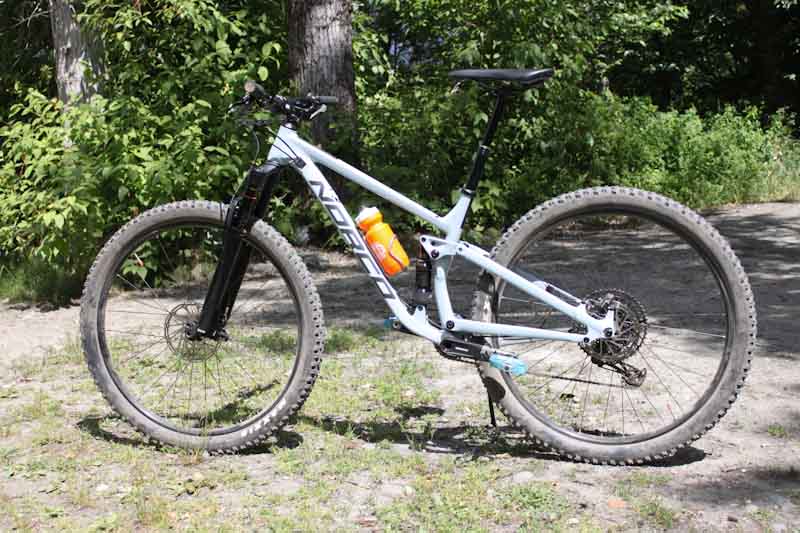In a world of ever-increasing prices, it’s nice to know brands still strive to present good value. With their updated Fluid FS line, Norco offers beginner and mid-level riders some highly capable complete builds at very reasonable prices. The 2019 Fluid frames feature impressive finishing touches, and they’re built with components that provide most of the same performance advantages of today’s higher-end bikes.
From the base model up, Norco’s new Fluids feature 1×12 drivetrains, dropper posts, and wide rims and tires. The highest-spec 29” FS1 model I tested is what I’d call a high entry-level bike, and it offers everything any new or mid-level rider should need to push their riding further. The 120mm travel two niner also makes a great all around trail machine, which is ideal for riders who can only justify owning one bike.
Norco Fluid FS1 frame details:
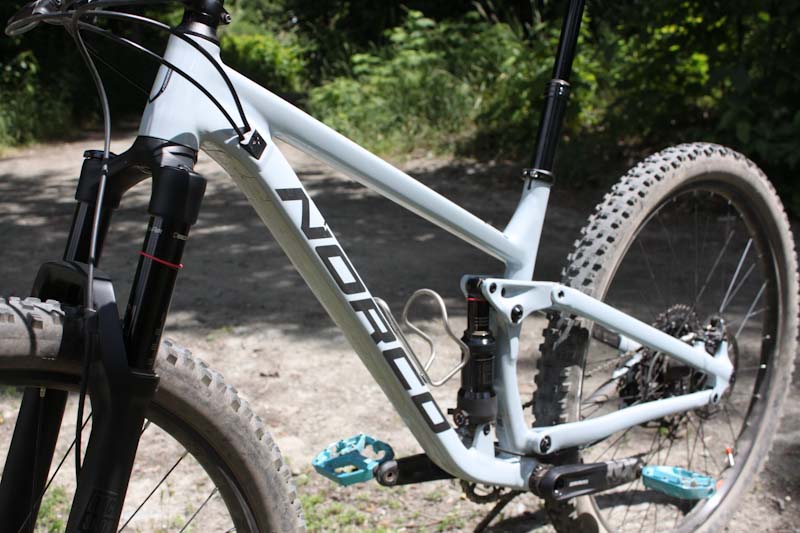 While its components put this bike in the entry level price range, Norco didn’t skimp on the Fluid frames. First of all, Norco builds the Fluids with size specific X6 double-butted aluminum tubing sets to ensure consistent stiffness and ride characteristics across all sizes. For this price point it’s also nice to see smooth welds on the front triangles and internal cable routing. A little warranty coverage never hurts, and the Fluid FS frames are covered against manufacturer’s defects in materials or workmanship for five years.
While its components put this bike in the entry level price range, Norco didn’t skimp on the Fluid frames. First of all, Norco builds the Fluids with size specific X6 double-butted aluminum tubing sets to ensure consistent stiffness and ride characteristics across all sizes. For this price point it’s also nice to see smooth welds on the front triangles and internal cable routing. A little warranty coverage never hurts, and the Fluid FS frames are covered against manufacturer’s defects in materials or workmanship for five years.
As for fitments, the Fluid frames use Boost 12x148mm rear axles, threaded 73mm BB shells, and have post-mounts for 160mm disc brakes. ISCG05 mounts are included to accommodate a chainguide, and bottle cage bosses on the down tube offer enough space for a top-loading bottle cage. Medium sized Fluids are available with either 27.5” or 29” wheels, so keep in mind this article lists specs for the 29er version I rode.
The Fluid FS1 29er uses Norco’s horst link linkage to provide 120mm of rear travel. Norco is up to date with current geometry trends, so at 5’9” I was comfortable on the medium right away. A medium 29er frame has a 440mm reach, and a top tube length of 590mm. The chainstays measure up at a stout 429mm’s. The FS1 29er has a 66.5° head tube angle, and a very steep effective seat tube angle of 76°. A BB drop of 36mm’s keeps your center of gravity nice and low.
Components:
The Fluid FS1’s build starts with a 130mm RockShox Revelation RC Debonair fork, with a Boost 15x110mm axle. Out back a RockShox Deluxe R Debonair sucks up the bumps, but does not offer a pedal platform.
It’s pretty nice to see a 12-speed drivetrain on a bike in this price range. The FS1 features a SRAM NX drivetrain with a 30t front ring, which should get you up just about any climb. I was pleased to see four piston SRAM Guide T brakes on the Fluid FS1. However, I think Norco could have tossed a set of 180/180mm rotors on there instead of running a 160mm rear.
The WTB STP i29 rims, which have a 29mm inner width, are laced to Novatec hubs. The Maxxis Forekaster tires are nice and wide at 2.6”, and Norco stocks the 3C EXO folding bead version on the FS1’s. The tires are tubeless ready, but the bike comes with tubes.
The Trans-X cockpit components aren’t anything fancy, but do the job and keep the bike’s price tag in check. The handlebar is 780mm wide, and stems are either 50mm or 35mm depending on the frame size. Norco is kind enough to include pedals with the Fluid FS1, but they’re just a basic pair of plastic platforms. They’ll get you out for your first few rides, but I’d plan to upgrade them. I slapped a pair of Crankbrothers Stamp pedals on the Fluid for my review.
The stealth routed Trans-X dropper post comes in a 130mm version on mediums, which is OK for that size. Taller riders should take note that the large and XL Fluids also come with 130mm posts. For those sizes, a longer post would be ideal.
Ride Impressions:
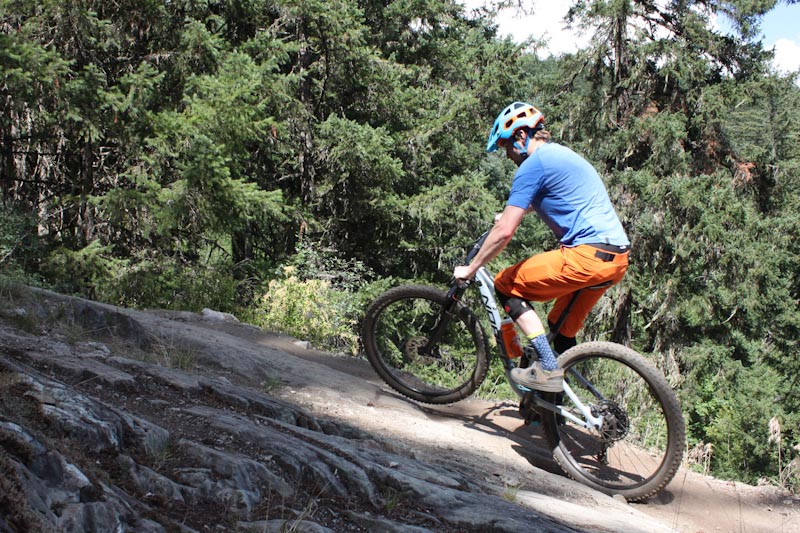 Since I have some fairly rough terrain in my area of B.C., I opted for the Fluid FS1 29er to make the most of its 120mm of travel. I generally find FSR bikes feel pretty lively on the trail. Their rear ends are quite active, so climbing traction on technical singetrack is very good. Norco’s linkage isn’t the stiffest pedaller out there, but it’s not prone to bobbing or sagging into its travel excessively. Even with no pedal switch the bike limited me to around 60% of its travel while climbing over technical terrain.
Since I have some fairly rough terrain in my area of B.C., I opted for the Fluid FS1 29er to make the most of its 120mm of travel. I generally find FSR bikes feel pretty lively on the trail. Their rear ends are quite active, so climbing traction on technical singetrack is very good. Norco’s linkage isn’t the stiffest pedaller out there, but it’s not prone to bobbing or sagging into its travel excessively. Even with no pedal switch the bike limited me to around 60% of its travel while climbing over technical terrain.
If your trails are just a short ride from home, you could get along pretty well with the single mode shock. On the trail, the 120mm Fluid offers a nice balance of grip and pedalling efficiency. If your area involves road riding to the trailhead or buff fire road climbs, a switchable rear shock will make this bike pedal better. On those smoother surfaces, I’ve found Horst Link/FSR bikes benefit from a multi position shock to keep the pedal bob to a minimum.
On the descents, the Fluid’s rear end provides a mostly linear feel, with just enough ramp-up to prevent clunky bottom-outs. Whether I rode a moderately technical or very rough trail, I’d consistently use all the shock’s travel, yet I couldn’t seem to make the bike bottom out harshly. I was quite impressed with how capable the Fluid was on rougher trails; I never felt like I was overclocking the bike, despite thrashing it down some very aggressive terrain.
Despite its forgiveness under impacts, the Fluid is still a treat to pump through rollers and pop off jumps and bumps. While trail inputs will compress the shock fairly easily, the rear end provides enough mid-stroke support to provide a playful ride. The Fluid doesn’t plow through bumps as smoothly as some bikes, but does a good job of keeping the rear wheel glued to whatever it’s rolling over.
The Fluid FS1’s tubing isn’t particularly beefy, but provides an adequate level of stiffness. The frame is strong enough to handle predictably, but does give up a little flex when pinballing through fast rocky sections.
Except for its seat tube angle, the Fluid FS1 doesn’t go to extremes with its geometry. Its front end is long enough to provide a well-balanced rider position, but it retains a comfortable reach that doesn’t stretch you out over the top tube. The steep seat mast sits you up over the cranks, so putting power down on the pedals is no problem. I only felt the need to stand and climb when the trail got really steep, and at those moments it’s not hard to get up over the front end.
The steering angle isn’t super slack, which made for predictable and comfortable handling whether climbing or descending. The short rear end makes the Fluid feel whippy around corners, and it’s easy to pick up the front wheel to clear an uphill step or wheelie through whoops. With a wheelbase of 1169mm’s, the Fluid strikes a nice balance between agility and stability. Stability at higher speeds is good, owing to the Fluid’s low bottom bracket. On the climbs I tagged a few rocks that I thought I’d simply breeze over, but clipping pedals wasn’t a constant issue.
SRAM’s NX shifter and derailleur perform impressively well, rarely showing any hesitation. I have only one minor gripe with the NX stuff – as the cable stretches, I find it requires a bit more fine tuning to keep the gears from skipping around. SRAM’s higher end components, even just one step up to GX, rarely seem to need more than one or two adjustments.
While the functionality is almost the same, there is a noticeable difference in feel from NX to the GX parts. The GX components shift faster and crisper, and there’s more play in the NX shifter’s thumb paddle so it requires more motion to change a gear (or two).
Up front, the Revelation RC Debonair fork is highly sensitive to smaller bumps and smoothly eats up bigger impacts. Its chassis proved stiff enough for my local trails, which definitely justify longer and beefier forks.
The Maxxis Forekaster tires are pretty good in dirt and loose dust, but not the grippiest on rock slabs. I seemed to be skidding my rear wheel on steep slabs that I can normally creep down without losing traction. The WTB rims have held up very well, both are almost perfectly true and have no dents or dings on the sidewalls.
The Fluid’s braking power was sufficient for 95% of my rides. I found the Guide T’s don’t modulate quite as well as higher-end SRAM brakes, but they’re still pretty easy to control and will reliably lock up a wheel. However, there are a few steep trails here that require a lot of brake dragging, and on a few such laps the Guide T’s (particularly the rear) got hot and required some serious squeezing by the trail’s end.
Finally, the Trans-X dropper post performed without fault and I found Norco’s XC saddle pretty comfortable, offering a bit more padding than some but maintaining a streamlined feel.
For the price, I think Norco’s Fluid FS1 is a great value. The frames boast high quality construction, modern geometry and finishing features that I’m happy to see on entry level bikes. Aside from a multi position rear shock (which would increase the bike’s price) the component spec includes key parts that affect ride performance; 12-speed gearing, wide wheels, and dropper posts. With a decent set of pedals added, novice level riders (or just those on a budget) should be able to shred any terrain on the Fluid FS1 and not feel limited. This is what I like to see from Norco!
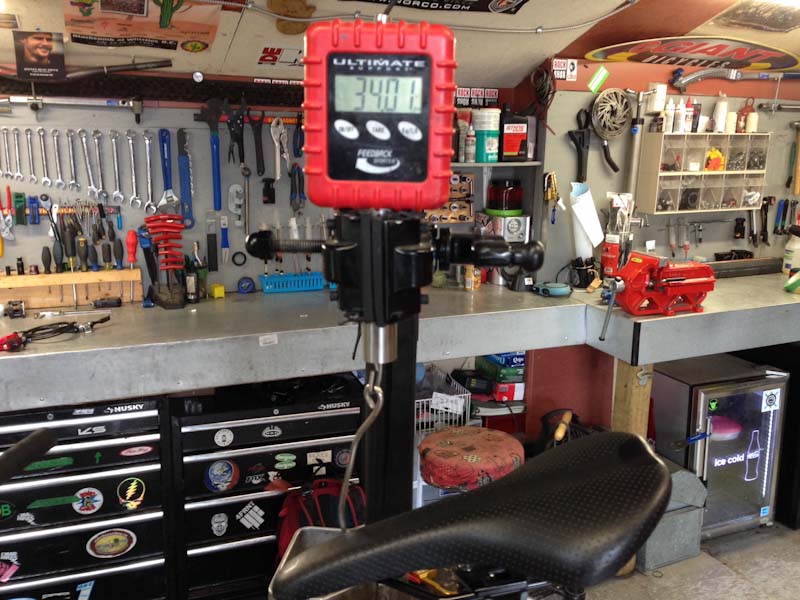
The 2019 Norco Fluid FS1 retails for $3049 in ‘concrete’ grey. Frame sizes range from XS-XL (with XS-M sizes on 27.5” wheels and M-XL’s on 29’s).
